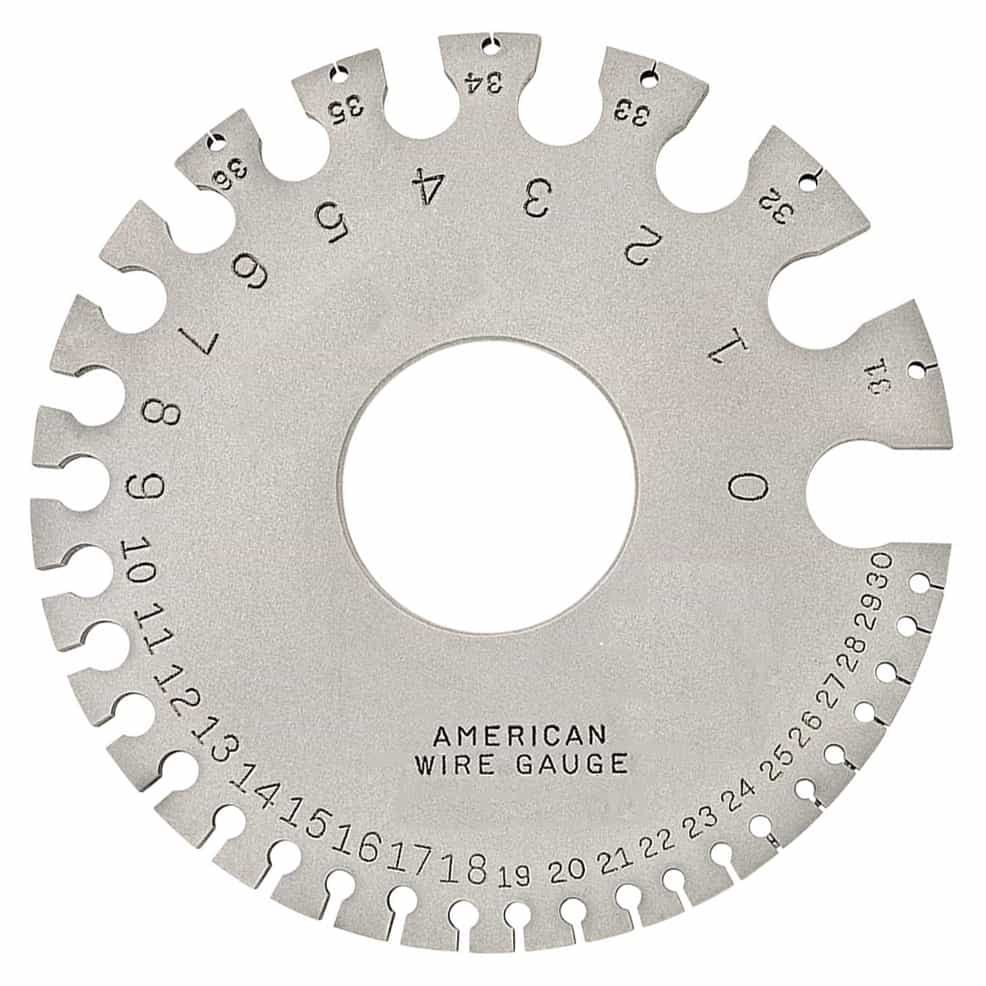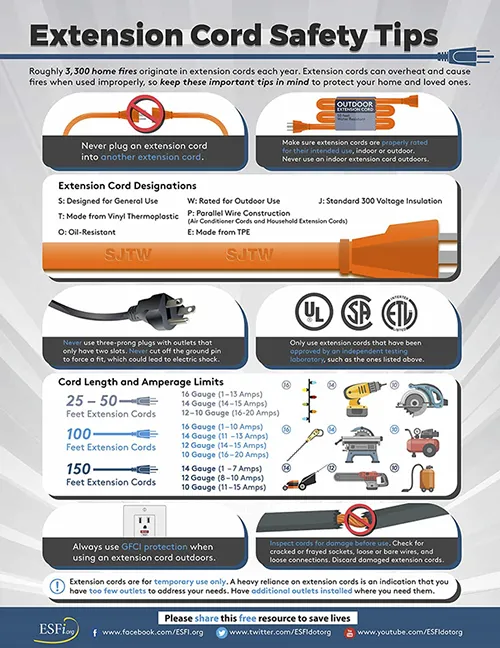
Written by Chris on March 21, 2023
Updated on: 20 July 2023
Electrical Extensions
What You Need to Know to Use Electrical Extension Cords safely
At one time or another we all may have to use extension cords, be it in the home or when away, for example camping. For most of us this has never presented a problem other than perhaps the occasional need for an adapter if travelling abroad. In many cases we may have had lady luck on our side. But that isn’t always the case, and unfortunately some people are injured and even killed all through the year. The U.S. Consumer Product Safety Commission are said to estimate that every year several thousand home fires are caused by extension cords, needlessly killing and injuring a lot of people.
Most of us have become so used to using extension cords on a daily basis that we overlook the dangers they can present. And it may surprise you that many authorities believe them to be one of the home’s most hazardous items.
What this boils down to is most of us are unaware of how important it is to ensure that any extension not only is undamaged in any way, but also has the appropriate gauge of wire to safely carry the level of current required by the device(s) we want to power. And they should be seen only as a temporary solution and never used as a permanent fixture.
How Can An Extension Cord Be Dangerous?
Damage Risks to Extension Cords
To begin with, extension cords are often exposed, flexible, and unsecured. As a result, they can be easily damaged and provoke significant dangers to people in their vicinity. For example, it is quite easy to trip over and damage a cable running across the floor. Placing a heavy item, such as chair, on an extension or passing the cable through a door and windows can result in sufficient damage to expose the cable’s internal wiring, substantially raising the risk of electrical shock.
While on the subject of fire dangers, we recommend you have a look at our information on fire categories and fire suppression devices.
Electrical Overloading
One of the most common and dangerous problems with extension leads is how easy it is to overload them, especially when they have multiple outlets. This can also happen when plugging in an appliance that has a higher electrical current than that rated for an extension, or by daisy chaining one extension lead into another, which you should never do.
The electrical current is the rate of flow along its conductors (wires) and is measured in Amps, whereas the amount of electricity delivered to your home from the grid is measured in Volts. To further complicate things, the power needed to make an appliance work is measured in Watts – the formula for calculating Amps is to divide the Watts by Volts, Watts = Amps x Volts, and Volts = Watts / Amps.
With these formulae you can calculate the wattage of a given circuit, for example:
- 15 Amp 120V circuit: 15 amps x 120 volts = 1,800 watts
- 20 Amp 120V circuit: 20 amps x 120-volts = 2,400 watts
- 25 Amp 120V circuit: 25 amps x 120 volts = 3,000 watts
- 20 Amp 240V circuit: 20 amps x 240 volts = 4,800 watts
- 25 Amp 240V circuit: 25 amps x 240 volts = 6,000 watts
- 30 Amp 240V circuit: 30 amps x 240 volts = 7,200 watts
- 40 Amp 240V circuit: 40 amps x 240 volts = 9,600 watts
- 50 Amp 240V circuit: 50 amps x 240 volts = 12,000 watts
- 60 Amp 240V circuit: 60 amps x 240 volts = 14,400 watts
When this current (Amps) flows through the wires it creates heat and the amount of heat generated increases as the wire gets longer. And when the flow is greater than the rating for a particular wire, the heat generated increases quickly to a point where the insulating material melts causing a short circuit and increasing the risk of fire. Reel extensions in particular must be fully unwound when in use to prevent the coil from overheating.
One practical example you might find is how warm the cable becomes when plugging in an electric radiator or fan heater and adjusting the setting to high. This is normal. However, were you to add an extension cord that contained wire of a lower rating than that supplied with the radiator you would be asking for serious trouble.
Wire Sizes
You may or may not have noticed how the wires and cables attached to various devices differ in both size and length. These two variables are the most important factors that influence how safely a cable can handle the flow of an electrical current.
Inside the cable’s non-conductive insulation material runs highly conductive twisted wire (some contain solid copper wire), sometimes of copper and in other instances it might be an alloy of various metals. In modern cables the non-conductive insulation material is usually PVC which according to some has an indefinite life. Older cable may be sheathed in rubber, recognizable by its black exterior, in which case the life is said to be around 25 years depending on external influences.
How Can I Tell What The Wire Rating Is?
While extension cords are freely available in different lengths, and sizes, their capacity to flow electrical current depends on the wire gauge. The wire gauge is its diameter or cross-sectional area which together with its length are the variables which affect the level of the current it can safely carry as well as how much it can heat up.
Known in an abbreviated form as the AWG (which is an acronym for American Wire Gauge), this is a rating system used mainly in North America for the diameters of electrical conducting wire and it has been in use for over 150 years. As you can see from the illustration below, wire gauge sizes are associated with numerical values (whilst the relative ns here are correct, the sizes shown are for illustrative purposes only).

The higher the AWG gauge numbers, the thinner the wire. The biggest number 0 wire is the thickest and can carry 230 amps.
Dos and Don’ts When Using an Electrical Extension Cord
The Texas Department of Insurance have published the following useful dos and don’ts when using extension cords:
- Do keep extension cords away from water.
- Do use GFCI (ground fault circuit interrupter) protection when using extension cords in wet or damp environments.
- Do keep extension cords away from children and animals.
- Do pull on the plug, not the cord, when removing an extension cord from the outlet.
- Do store extension cords indoors.
- Do unplug extension cords when not in use.
- Do keep slack in flexible extension cords to prevent tension on electrical terminals.
- Do put safety covers on the unused receptacle outlets on extension cords.
- Do reduce long cord lengths by installing additional electrical outlets.
- Do consider installing overhead pendants to reduce trip hazards.
- Do use cord protectors if a cord must cross an aisle.
- Do use three-wire extension cords from the power source to the end use. (Temporary power must run through a GFCI in construction. Use double-insulated tools with two-prong plugs when plugging into a three-wire extension cord.)
- Do not use an indoor extension cord outdoors.
- Do not overload cords with more than the proper electrical load.
- Do not run extension cords through doorways, holes in ceilings, walls, or floors.
- Do not move, bend, or modify any of the extension cord plug’s metal parts.
- Do not daisy chain, or connect, multiple power strips together.
- Do not force a plug into an outlet.
- Do not use an extension cord when it is wet.
- Do not overheat an extension cord.
- Do not cover an extension cord with anything other than a cord protector.
- Do not drive over an extension cord.
- Do not drag an extension cord.
- Do not attach extension cords to the wall with nails or staples.
And the following flyer issued by the Electrical Safety Foundation International (ESFI) contains more advice on the safe use of these extension cords.

